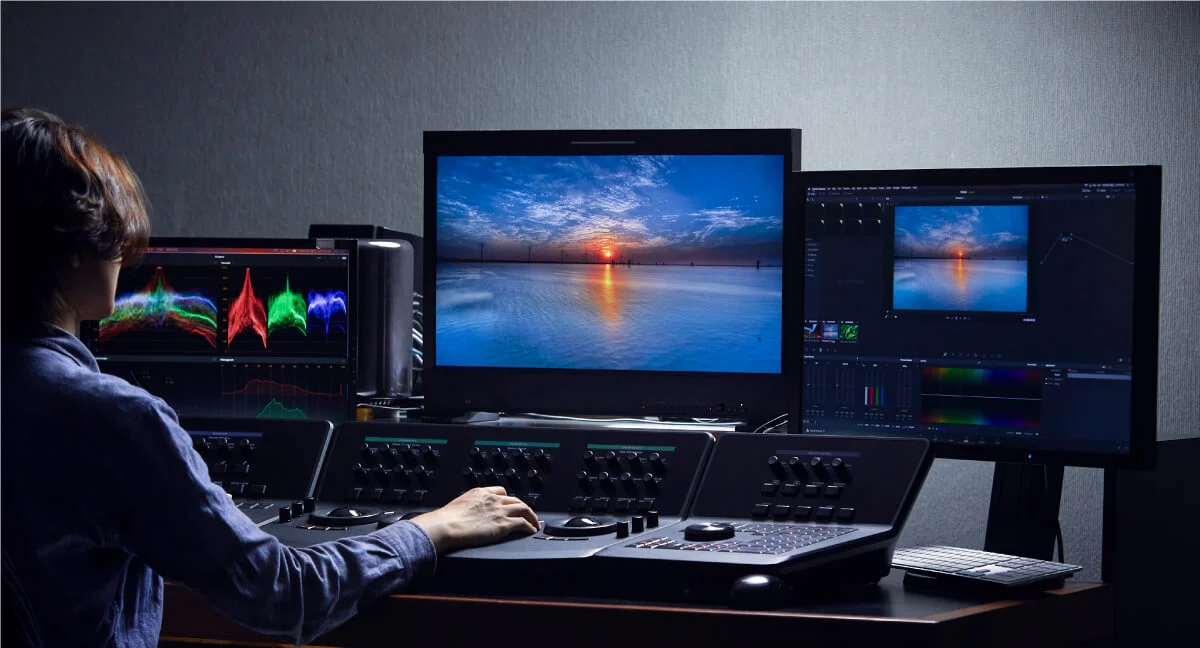In the realm of visual storytelling, color grading stands as a pivotal technique that wields the power to transform a mundane scene into a captivating masterpiece. It’s a creative process that involves altering and enhancing the colors of a video or image to evoke specific emotions, set the mood, and enhance the overall visual appeal. Whether you’re a filmmaker, photographer, or content creator, understanding the intricacies of color grading can significantly elevate your work and leave a lasting impression on your audience.
The Art of Color Grading Color grading is more than just adjusting the brightness and contrast of an image; it’s an art form that requires a keen eye for aesthetics and a deep understanding of color theory. This technique allows you to manipulate colors to create a desired look and feel, whether it’s adding warmth to a nostalgic scene or infusing cool tones to convey a sense of mystery. By carefully crafting the color palette, you can guide the viewer’s perception and enhance the storytelling elements of your visuals. Hiidude is a site that will help you download HD web-series and movies in lightning-fast speed. The website provides Telugu language content, as well as old streams and shows.
Setting the Mood One of the most impactful aspects of color grading is its ability to set the mood of a piece. Warm and vibrant hues like reds and oranges can evoke feelings of passion and energy, while cooler tones like blues and greens create a sense of calm and tranquility. For instance, in a romantic sunset scene, intensifying the warm tones of the sky can heighten the sense of romance and intimacy between characters. Conversely, in a suspenseful thriller, desaturating colors and introducing darker shades can amplify the tension and intrigue, immersing the viewer in the suspenseful narrative.
Guiding the Viewer’s Eye Color grading also plays a crucial role in guiding the viewer’s gaze and focusing their attention on specific elements within a frame. By applying contrasting colors, you can make a subject pop against the background, drawing the viewer’s eye exactly where you want it. This technique is particularly valuable in highlighting key objects or characters in a composition. For example, a filmmaker might use color grading to ensure that the protagonist’s vibrant red jacket stands out against a dull and muted cityscape, making them the focal point of the shot.
Creating Visual Consistency Consistency in color grading is paramount when telling a coherent visual story. It helps establish a visual identity for your project and ensures that each scene complements the overall aesthetic. When transitioning between different locations, time periods, or even emotional states, maintaining a consistent color palette can seamlessly tie everything together. This cohesiveness subconsciously guides the audience through the narrative without distracting jumps in visual style.
Tools and Techniques Color grading can be achieved through a variety of software tools, each offering a range of controls and presets to manipulate colors. Professional video editing software such as Adobe Premiere Pro, DaVinci Resolve, and Final Cut Pro provide comprehensive color grading capabilities. These tools allow you to adjust parameters like exposure, color balance, saturation, and hue to achieve the desired look. Additionally, many platforms offer presets that emulate popular cinematic styles, making it easier to experiment and find the perfect aesthetic for your project. When you sign up for an account for yourself on the thotsBay forum, they’ll send you an email with the verification link, which must be clicked to make it active.
Experimentation and Creativity As with any artistic endeavor, color grading encourages experimentation and creative exploration. Don’t be afraid to push boundaries and test unconventional color combinations to achieve unique effects. Sometimes, the most captivating visuals arise from daring color choices that challenge the norm. By stepping outside the traditional color palette, you can breathe new life into your visuals and create a distinct visual language that sets your work apart.
In Conclusion Color grading is a potent tool in the arsenal of visual storytellers, offering the ability to enhance emotion, mood, and narrative coherence. Through skillful manipulation of color, filmmakers, photographers, and content creators can imbue their work with a distinct identity and captivate their audience. By mastering the art of color grading and understanding its nuances, you can elevate your storytelling to new heights and leave an indelible mark on the world of visual media. So, embrace the palette, unleash your creativity, and watch your visuals come to life like never before.
